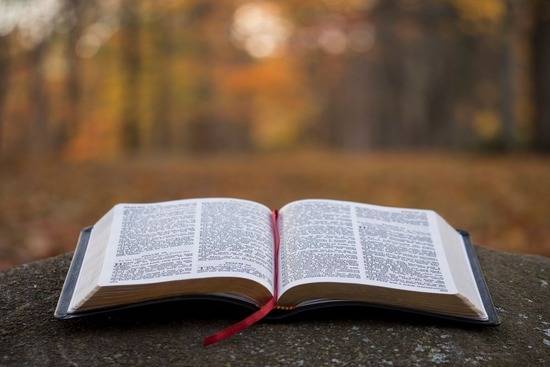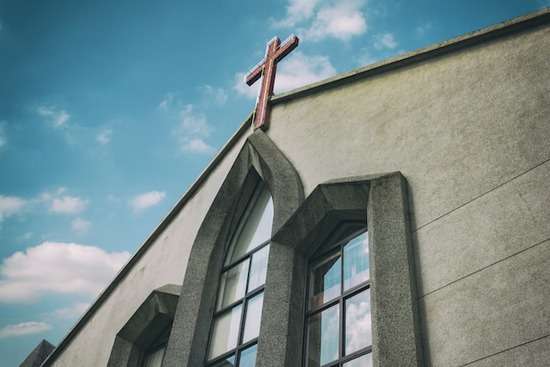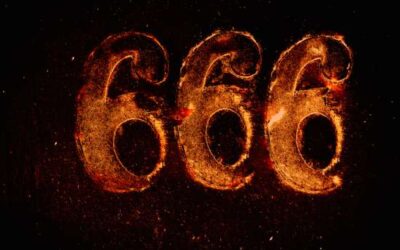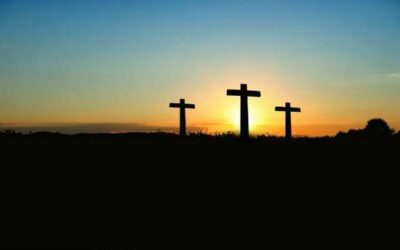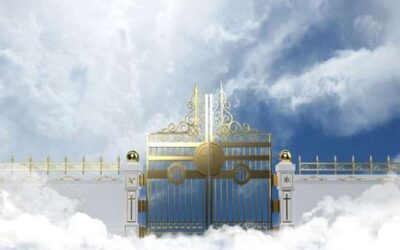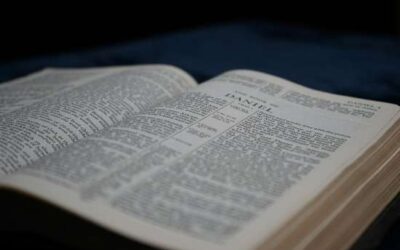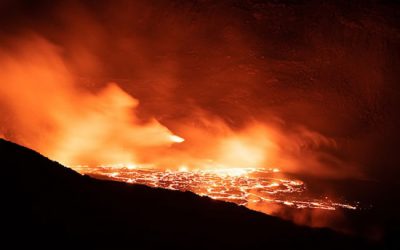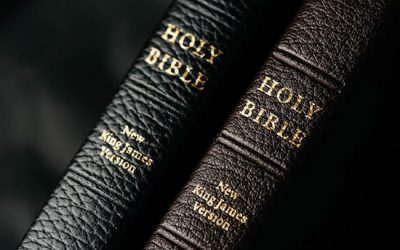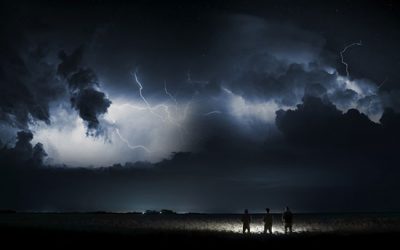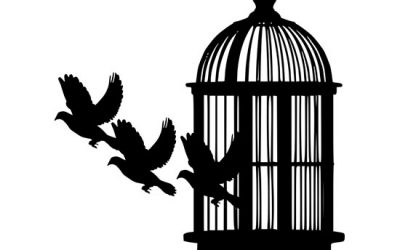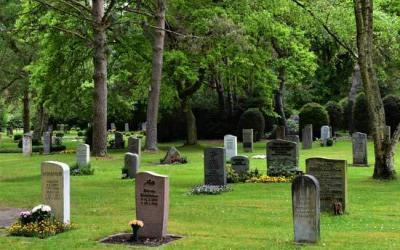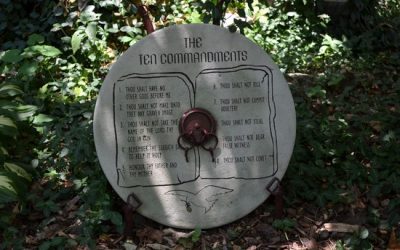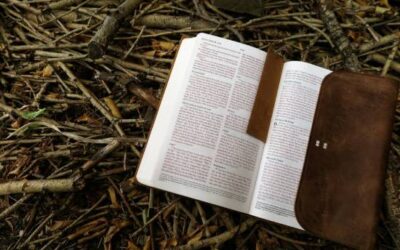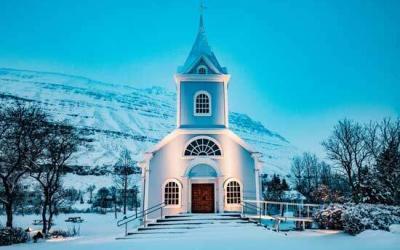What is Jesus Christ doing right now?
Seventh-day Adventists believe, according to the book of Hebrews, that Jesus is in the heavenly sanctuary—or temple—right now. He is our high priest, and His ministry in this role links His sacrificial death to the forgiveness of our sins and the cleansing of our hearts as we accept Him as our Savior.
And He is doing all of this to show us the compassionate and loving heart of God. Satan is our accuser (Revelation 12:10), but Jesus’ ministry in the heavenly sanctuary is God’s way of silencing those accusations and showing His fairness in forgiving us.
But to understand what all of this means, we need to get some background.
We’ll look at:
- What the Bible says about a literal heavenly sanctuary
- How the earthly sanctuary was a model of the heavenly sanctuary
- How the sanctuary relates to Christ’s ministry
- The Day of Atonement—the cleansing of the sanctuary
Adventists state their official belief on the heavenly sanctuary as follows:
“There is a sanctuary in heaven, the true tabernacle that the Lord set up and not humans.
In it Christ ministers on our behalf, making available to believers the benefits of His atoning sacrifice offered once and for all on the cross.
At His ascension, He was inaugurated as our great High Priest, and began His intercessory ministry, which was typified by the work of the high priest in the holy place of the earthly sanctuary.
In 1844, at the end of the prophetic period of 2300 days, He entered the second and last phase of His atoning ministry, which was typified by the work of the high priest in the most holy place of the earthly sanctuary.
It is a work of investigative judgment which is part of the ultimate disposition of all sin, typified by the cleansing of the ancient Hebrew sanctuary on the Day of Atonement. In that typical service the sanctuary was cleansed with the blood of animal sacrifices, but the heavenly things are purified with the perfect sacrifice of the blood of Jesus.
The investigative judgment reveals to heavenly intelligences who among the dead are asleep in Christ and therefore, in Him, are deemed worthy to have a part in the first resurrection. It also makes manifest who among the living are abiding in Christ, keeping the commandments of God and the faith of Jesus, and in Him, therefore, are ready for translation into His everlasting kingdom.
This judgment vindicates the justice of God in saving those who believe in Jesus. It declares that those who have remained loyal to God shall receive the kingdom. The completion of this ministry of Christ will mark the close of human probation before the Second Advent.”
Now let’s break this all down, starting with where we find these details in Scripture.
What the Bible says about a literal heavenly sanctuary
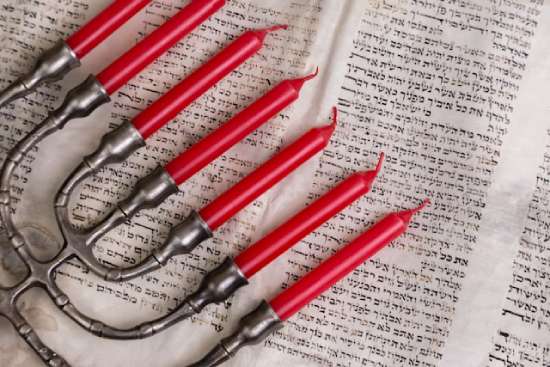
Photo by Diana Polekhina on Unsplash
The book of Hebrews mentions that Jesus is in a sanctuary in heaven right now.
It explains that Jesus is “seated at the right hand of the throne of the Majesty in the heavens, a Minister of the sanctuary and of the true tabernacle which the Lord erected, and not man” (Hebrews 8:1-2, NKJV).
From this verse, we learn that this heavenly temple was built by God Himself and not by any human being.
This original in heaven provided the template for the sanctuary that was built on earth, first mentioned in Exodus. This earthly sanctuary was described as a “copy and shadow of the heavenly things” (Hebrews 8:5, NKJV).
That’s why, when God told Moses how to make the earthly sanctuary and its furniture, He emphasized:
“Make them according to the pattern which was shown you on the mountain” (Exodus 25:40, NKJV).
This is the same sanctuary that John saw in vision when he recorded:
“Then the temple of God was opened in heaven, and the ark of His covenant was seen in His temple” (Revelation 11:19, NKJV).
As we will see, this heavenly sanctuary has furniture similar to the earthly one.
The earthly sanctuary was a model of the heavenly sanctuary
The Old Testament describes a sanctuary that was first built in the wilderness under Moses’ supervision. When God gave “the pattern of the tabernacle and the pattern of all its furnishings,” He meant that Moses would produce a replica of the one in heaven (Exodus 25:9, NKJV).
Moses built a sanctuary with two compartments—the Holy Place and the Most Holy Place. The structure was enclosed by a fence made of linen hangings, and this enclosure formed the outer court (Exodus 25:8; 27:9-15; Numbers 3).
Each of these compartments contains specific significance in the plan of salvation from sin.
Even the various offerings and feasts outlined in the Old Testament for the Israelites pointed to the life and ministry of Jesus for our salvation. The symbolism goes beyond Jesus’ earthly ministry and covers His work after His ascension to heaven.
That’s why when the Psalmist saw how God’s plan for the salvation of humanity is outlined in the sanctuary, he said:
“Your way, O God, is in the sanctuary” (Psalm 77:13, NKJV).
Let’s learn how we see God’s way through Christ’s ministry there.
How does the sanctuary relate to Christ’s ministry?
The earthly sanctuary was God’s way of helping the children of Israel know that He was present with them, giving them visible, tangible examples of how the issue of sin must be dealt with (Exodus 25:8). It helped them ultimately understand how Jesus was going to bring an end to sin through His sacrificial death, ascension to heaven, and His ministry in the heavenly sanctuary that will end with the Second Coming.
To deal with sin, two main services took place in the sanctuary (Hebrews 9:6-7):
- The daily services
- The yearly service (Day of Atonement)
The daily services involved the sacrificing of animals for the forgiveness of sins. The priests would make these sacrifices at the altar of burnt offering in the courtyard. Then they would carry them into the Holy Place of the sanctuary and sprinkle the blood there to symbolize the transfer of those sins from the individual to the sanctuary (Numbers 28:3-4; Leviticus 4:34).
The yearly service—known by the Jews as the Day of Atonement—was a way of “cleansing” the sanctuary from all the sins that had been symbolically transferred into the sanctuary.
During this service, the high priest entered the Most Holy Place of the sanctuary, which contained the ark of the covenant—a special item that represented the throne and presence of God and contained the Ten Commandments (Exodus 25:22; Hebrews 9:4).
The priest would sprinkle the blood there to symbolize God’s forgiveness of their sins.
When the ceremony was finished, the whole Israelite camp was considered ceremonially clean (Leviticus 16:29-34).
These acts were to symbolize what Jesus would do in His ministry.
The altar of burnt offering in the courtyard, where the animal sacrifices took place, represented Jesus Christ’s sacrificial death on our behalf (Exodus 27:1-8; Hebrews 10:12).
Then, He went into the Holy Place of the sanctuary to apply the blood of His sacrifice for our forgiveness. That began after His ascension to heaven.
Now, let’s look at what Jesus is actively doing in the Holy Place.
Jesus’ ministry in the heavenly sanctuary began at Pentecost

Photo by Skitterphoto
After His resurrection, Jesus appeared to His disciples for a period of 40 days. Then He ascended into heaven (Acts 1:3).
But before He left, He insisted they wait in Jerusalem until He had sent them the Holy Spirit to empower them to preach the Gospel to all the world (Luke 24:49; Acts 1:8, 9).
And ten days later, on the Day of Pentecost, the Holy Spirit was poured out on God’s people (Acts 2:1-4).
Now, Pentecost was the next Jewish feast after the Feast of Firstfruits, which was fulfilled at Christ’s resurrection.
It happened on the 50th day after the firstfruits of the harvest had been dedicated at the temple (Leviticus 23:15-17).
On this day, Jesus sent the Holy Spirit as promised. And this event was accompanied by “divided tongues, as of fire,” which “sat upon each of [the disciples]” (Acts 2:3, NKJV).
The exhibition of fire at this event is significant. It reminds us of a major milestone in the earthly sanctuary services recorded in the Old Testament.
When the priestly ministry first began, Aaron, who was the ordained priest, presented sacrifices on the altar.
And when he was done,
“Moses and Aaron went into the tabernacle of meeting, and came out and blessed the people. Then the glory of the Lord appeared to all the people, and fire came out from before the Lord and consumed the burnt offering and the fat on the altar” (Leviticus 9:22-24, NKJV).
Also, at the inauguration of Solomon’s temple, a sacrifice was offered. And as a symbol of God’s acceptance of the sacrifice, “fire came down from heaven and consumed the burnt offering and the sacrifices; and the glory of the Lord filled the temple” (2 Chronicles 7:1, NKJV).
The fact that the fire consumed the sacrifice signified that God accepted it. This was the case with Elijah’s and David’s sacrifices too (1 Chronicles 21:26; 1 Kings 18:38).
So, fire coming down from heaven signified three things:
- Acceptance of the sacrifice made at the altar
- Starting of the priestly ministry so the priest could enter the Holy Place
- Opening up the sanctuary as a place for ministry
And notice that the fire falls on the altar of sacrifice located in the outer court—which signifies the earth, where Jesus offered Himself as a sacrifice.
But we read that the “way into the holy places [was] not yet opened as long as the first section (the outer court) is still standing” (Hebrews 9:8-9, ESV).
This means the ministry in the Holy Place could not start until the ministry in the outer court had been finalized. And it was finalized when the sacrifice offered there was accepted.
The priest would enter the Holy Place and go out again to bless the people as Aaron did.
In explaining the events of Pentecost, Peter made it clear that Jesus had “received the promise of the Holy Spirit from the Father” and then poured it out to His followers on earth (Acts 2:33, NASB).
So Jesus went to the heavenly sanctuary after His ascension. And the acceptance of His sacrifice on the Cross was signified by the fire falling at Pentecost.
He entered into the Holy Place and blessed His people who were at the camp (on earth) with the outpouring of the Holy Spirit. This is key, because one of the priest’s first tasks in the sanctuary was to ensure continual light by adding oil to the lamps.
And guess what oil symbolizes!
The Holy Spirit (Zechariah 4:2-6; Acts 1:8).
That is why when John saw a vision of Jesus in heaven, He was walking amid the candlesticks to ensure they were lit to the end of ages (Revelation 1:13, 20).
And history shows that the witness of God’s true church could not be completely put out, even in the Dark Ages.
The Holy Place of the sanctuary also contained a table of bread, called showbread. The priests maintained the showbread in the sanctuary and changed it every Sabbath. Similarly, Jesus keeps His church fed by the Word of God. He Himself is the Word that became flesh (John 1:14), and at another time He also described Himself as “the bread of life” (John 6:35).
Again, history reveals that neither the Bible nor the Christians who upheld it were ever completely done away with, even though there were times and places throughout history when Christians were persecuted, access to the Scriptures was restricted1 or sparsely available, or a region’s religion or government discouraged (or even outlawed) owning a Bible.2
Jesus Himself stands to ensure His children can access it until the end.
Jesus is interceding for us in heaven—right now and continually
In the earthly sanctuary, the people would pray at the temple during the “hour of incense.” They’d pray outside while the priests were in the Holy Place, burning incense on the altar of incense. This prayer service did not end in the Old Testament times but continued even to the New Testament days (Luke 1:8-10).
Now in the heavenly sanctuary, Jesus “always lives to make intercession” for us as our high priest (Hebrews 7:25, NKJV).
He does this by mingling our imperfect prayers with His righteousness since He alone is “holy, harmless, undefiled, separate from sinners” (Hebrews 7:25-26, NKJV).
It’s only the righteousness of Christ that can make our prayers acceptable before God, just like only a special kind of incense was acceptable for the sanctuary service (Exodus 30:34-38).
As we pray, Jesus works to ensure our prayers are accepted and answered.
The book of Hebrews tells us that Jesus “is also able to save to the utmost those who come to God through Him, since He always lives to make intercession for them” (Hebrews 7:25, NKJV).
Therefore we can come with boldness to the throne of God and receive mercy and grace in our time of need (Hebrews 4:16).
But what about the yearly service in the sanctuary? How does that relate to Christ? Find out what the Day of Atonement was all about and how Jesus is fulfilling it today.
The Day of Atonement—the cleansing of the sanctuary
Leviticus 23 describes the Day of Atonement as “a holy convocation” (gathering) of the Israelites. On that day, the high priest performed a ceremony in which the sins that had been forgiven and transferred to the sanctuary all year long were removed. It was a cleansing of the sanctuary.
This ceremony is sometimes described as a Day of “At-one-ment”—meaning it was God’s way of making His people one with Him and reconciling them to Himself. It removed the barriers of sin that had separated the people from God.
That’s why, prior to this ceremony, all the people searched their hearts—called “afflicting their souls” in the Bible—to make sure they weren’t holding on to anything that could keep them from closeness with God.
The reason for this?
God loved them so much that He could not allow them to continue to live with sin. He knew that sin is messy and would eventually destroy them, so He provided a way for them to get rid of it from their lives.
If they chose not to accept that way, they were rejecting the only way out of the mess.
Because of the seriousness and importance of this ritual, the Israelites saw this day as a time of judgment.
How did this atonement happen?

Photo by Ray Aucott on Unsplash
While the people searched their hearts through prayer and fasting, the high priest would intercede for them by taking “two male goats for a sin offering” (Leviticus 16:5, ESV).
Then he would “cast lots over the two goats, one lot for the Lord and the other lot for Azazel [or scapegoat]” (Leviticus 16:8, ESV). Casting lots was similar to flipping a coin to make a decision.
The one for the Lord was sacrificed.
Its blood was used to cleanse the sanctuary and to “make atonement for the Holy Place, because of the uncleannesses of the people of Israel and because of their transgressions, all their sins” (Leviticus 16:16, ESV).
The high priest would carry the blood all the way into the Most Holy Place and sprinkle it before the ark of the covenant. The top of the ark of the covenant, representative of God’s throne, was called “the mercy seat” (Exodus 25:21). Here, the people received mercy even though they had broken the conditions of God’s covenant found in the Ten Commandments.
Then, the scapegoat was presented alive before the Lord.
With this one, the high priest would “lay both his hands” on its head and “confess over it all the iniquities of the people of Israel, and all their transgressions, all their sins” (Leviticus 16:21, ESV).
Then it would be sent away to the desert to bear all the sins of the people (Leviticus 16:21-22).
How is Jesus fulfilling the Day of Atonement?
In God’s plan to save us from sin, the Day of Atonement was fulfilled at the end of the 2300-day prophecy in 1844. This prophecy in Daniel 8:14 speaks of the cleansing of the sanctuary, which is a clear allusion to the Day of Atonement.
In 1844, Jesus entered the Most Holy Place in the heavenly sanctuary to begin a work of judgment that would cleanse the records in the Holy Place of heaven. He started going through the records of those who professed to follow Him. Adventists call it the Investigative Judgment (Daniel 7:9-10, 13-14; 1 Peter 4:7).
The Most Holy Place contains the Ten Commandments, which Jesus uses as the basis for the judgment. He looks at each individual’s life to see whether it reveals repentance that has led to a genuine change in that person’s life.
Jesus’ purpose in cleansing the heavenly sanctuary is to put an end to sin. With His intercessory ministry, repented sins have been transferred to the sanctuary. But now, He is going to completely cleanse it by cleansing the records (Jeremiah 17:1; Hebrews 9:23).
But in order for the records in heaven to be clean, He must also cleanse the lives of His people through His blood. He says that He is the one who “blots out your transgressions for My own sake; and I will not remember your sins” (Isaiah 43:25, NKJV).
Then those sins will finally be placed on Satan and eventually destroyed.
But Satan, who is also known as the “accuser of the brethren,” is quick to accuse us and say we’re not worthy of God’s gift (Revelation 12:10; Zechariah 3:1, NKJV).
He claims we’re unworthy of salvation due to our sinfulness and says God is unfair for forgiving us (Romans 3:23).
For this reason, Jesus acts as our advocate against Satan, in the presence of God and the universe (1 John 2:1), applying the benefits of His sacrificial death to all who claim them. He forgives our sins and places them in the sanctuary through His blood (Hebrews 9:12-26).
And this isn’t because God the Father doesn’t love us. After all, Jesus came to show us that the Father loves us just as much as He does (John 16:27).
But by advocating for us, Jesus is able to show that God is fair in forgiving our sins and giving us eternal life in heaven.
Only He can refute Satan’s arguments against the guilty human race (Jude 1:9; Zechariah 3:2). And He does this by showing that He paid the price for our release from guilt.
Thus, we are fairly redeemed from the clutch of Satan through Christ’s ministry for us.
This scene is vividly portrayed in the story of Joshua the priest, which is found in Zechariah 3:1-11.
The Investigative Judgment is going on now

Image by EKATERINA BOLOVTSOVA
As we’ve learned through this page, Jesus is going through our records in heaven. He is blotting out the sins of all those who have accepted His gift of salvation and cleansing.
Soon, His ministerial work will end. His ministry will come to a stop when our probation closes and He says:
“He who is unjust, let him be unjust still; he who is filthy, let him be filthy still; he who is righteous, let him be righteous still; he who is holy, let him be holy still” (Revelation 22:11, NKJV).
And since no one knows when this will happen, now is the time to turn to Him. The time to send our sins to Christ, who assures us of His forgiveness. Then, when He comes, we’ll be covered in His righteousness and be able to receive the blessings promised by God:
“If you will walk in My ways, and if you will keep My command, then you shall also judge My house, and likewise have charge of My courts; I will give you places to walk among these who stand here” (Zechariah 3:7, NKJV).
In a nutshell, we have seen that Jesus is currently ministering as our high priest in the heavenly sanctuary and revealing the heart of God the Father to us.
He advocates for us when Satan accuses us because of our sins. And thanks to His sacrificial death on the Cross, He redeems us from sin and the penalty of death by His own blood.
That is our only guarantee of eternal life at His Second Coming.
And even as Jesus cleanses the records during this time of Investigative Judgment, He also wants to cleanse our lives as we grow in Him.
Related Articles
- “Medieval Christendom,” Britannica. [↵]
- “Countries Where Christianity Is Illegal 2024,” World Population Review. [↵]
More Answers
Adventist Beliefs
Learn how the 28 Fundamental Beliefs summarize and describe Seventh-day Adventism. They are not a checklist of requirements; instead they show how Adventists interpret and apply Scripture.
What Do Adventists Believe About the Authority of the Bible?
Learn how one really old book (the Bible) is the sole foundation for all Seventh-day Adventist beliefs.
Is the Soul Immortal? Exploring What Adventists Believe
Based on the way the Bible describes humanity in comparison to God and angels, Seventh-day Adventists believe souls are not something you have, but something you are.
What Do Adventists Believe About the Mark of the Beast and 666?
It’s a popular topic, especially during tumultuous times. When everything around you feels chaotic, it’s easy to wonder about the end of the world, and topics like the mark of the beast, as mentioned in Revelation 13, can stir up uneasiness.
What Do Adventists Believe About the Atonement?
If you’ve spent much time in the Bible books of Leviticus or Numbers, you might’ve noticed the word atonement.
Do Seventh-day Adventists Believe Only They Will Go to Heaven?
No, Adventists definitely don’t believe they’re the only ones that will go to heaven. As a matter of fact, we don’t believe admittance into heaven is ever based on which church or denomination we belong to. People all over the world from different Christian denominations, religions, and walks of life will be welcomed by Jesus.
How Adventists Developed the Sanctuary Doctrine and What It Means
The sanctuary was a building at the center of ancient Israelite society that gives us a small picture of the original sanctuary, God’s throne room in heaven (Hebrews 8:1-2).
What Do Adventists Believe About Faith and Works?
Adventists believe we are saved by faith, which is the belief and trust we have in Jesus to save us from our sins. Jesus, then, enables us to live in harmony with God’s commandments and serve others with love—sometimes referred to as “works.”
Do Seventh-day Adventists Believe in Hell?
Seventh-day Adventists believe that any human being who accepts God’s free gift of salvation through Jesus will be given eternal life. But what about the eternal fate of those who choose not to accept Jesus?
Sola Scriptura—What It Means and Why It Matters
Sola scriptura is a term that originated during the Protestant Reformation. It represents the way many Christians view the Bible and its authority. While the idea is simple enough, there is so much more to sola scriptura than its basic definition.
Do Seventh-day Adventists Believe in the Secret Rapture
The secret rapture belief asserts that the followers of Jesus will be suddenly and stealthily “raptured” from earth and taken to heaven. Then, any people left on earth will face a period of great difficulty—before Christ’s second coming actually happens.
Why do Adventists Emphasize Religious Liberty?
Adventists see religious liberty as an essential human right. After all, God endowed humanity with freedom of choice from the very beginning. So we believe it’s best for governments to also support their citizens’ rights to worship based on their convictions.
What Seventh-day Adventists Believe About Growing in Christ
Christian growth is the experience of allowing Jesus Christ to work in our lives through the Holy Spirit and restore in us the image we were designed for—God’s image of selfless, other-centered love.
What Do Seventh-day Adventists Believe about the New Earth?
Seventh-day Adventist, like other Christians, believe that after the second coming of Christ, God will cleanse our earth by fire and then restore it back to Eden-like perfection.
What Adventists Believe About the Millennium and the End of Sin
As most Christians, Seventh-day Adventists hope for the time when sin and evil will no longer exist. The Bible teaches that God will bring an end to sin after a thousand-year period of time called the millennium.
What Are Seventh-day Adventists Beliefs on Death and the Resurrection?
The thought of dying can seem scary. And the idea of being resurrected—or coming back to life—can seem a little uncomfortable.
What Do Seventh-day Adventists Believe about The Second Coming of Christ?
The second coming of Jesus Christ is an event the Bible prophesies will occur at the end of this world’s history. It’s called His second coming to distinguish it from His first, when Jesus was born to Mary and lived as a human before dying on the Cross.
What do Seventh-day Adventists Believe about Marriage and Family?
The Seventh-day Adventist Church believes God established marriage and the family unit to be blessings to humanity. They make up a relational structure that can reflect the multifaceted nature of God’s love.
What Seventh-day Adventists Believe about Christian Behavior
The patterns of actions and words that make up behavior are central to any type of belief system because they flow from those beliefs. Seventh-day Adventists look to the Bible, with Jesus as the perfect example, for guidance on shaping our daily behavior.
What do Seventh-day Adventists Believe about the Sabbath?
Seventh-day Adventists believe that the biblical Sabbath is a beautiful gift of rest that God gave to us at Creation and that remains valid to this day. Falling on the seventh day of the week—Saturday—it connects us to God in a special way and offers us a weekly opportunity to be physically, mentally, and spiritually refreshed.
What Seventh-day Adventists Believe about Stewardship (and What Does It Mean?)
Love for God and our fellow humans is the overriding principle of the Seventh-day Adventist faith. And we express that love in an overarching way through how we manage the things—material and immaterial—that God has entrusted to us.
What Do Adventists Believe About the Law of God?
Seventh-day Adventists believe that God’s law reflects His character of love (1 John 4:8; Romans 13:10). It is perfectly summarized in the Ten Commandments given to Moses on Mount Sinai, showing us the practical application of loving God and loving other people.
What Do Seventh-day Adventists Believe About the Gift of Prophecy?
Adventists believe the gift of prophecy is a spiritual gift that the Holy Spirit gives to specific individuals to help the church carry out Jesus’ Great Commission (Matthew 28:16–20). Prophecy helps strengthen, encourage, and comfort His people (1 Corinthians 14:3).
What Seventh-day Adventists Believe About Spiritual Gifts in the Bible
Seventh-day Adventists believe that spiritual gifts are talents that the Holy Spirit gives to believers and followers of Jesus Christ. These gifts are different but complementary, and they often equip followers of Christ with the ability to spread the good news about Jesus and encourage its members.
What do Seventh-day Adventists Believe about the Lord’s Supper (Communion)?
Like many Protestant Christians, Seventh-day Adventists believe in the practice commonly called the Lord’s Supper or Holy Communion. They drink grape juice and eat unleavened bread in obedience to Jesus’ direct instructions to do it in remembrance of Him (1 Corinthians 11:24–25).
What do Seventh-day Adventists Believe about Baptism?
Like many Protestant Christians worldwide and throughout history, the Seventh-day Adventist Church believes in baptism, a ceremony in which individuals go under water to publicly demonstrate dying to an old life and beginning a new life in Christ. We baptize people by immersion, as taught and exemplified in the Bible.
What Do Seventh-day Adventists Believe about Unity in Christ?
Seventh-day Adventists believe in biblical unity—the idea of believers in Jesus being united by the truth of the Bible and the common goal of representing God and His love to the world.
What do Seventh-day Adventists Believe about the Remnant and its Mission?
The “remnant” are a group of faithful believers that have existed throughout history and proclaimed God’s truth, love, and plan to save humanity. They “remain” with God even amid persecution and also when it seems everyone else has rebelled against God or compromised their beliefs.
What do Seventh-day Adventists Believe about the Church?
Seventh-day Adventists believe that the idea of the church is an important biblical concept.
Didn’t find your answer? Ask us!
We understand your concern of having questions but not knowing who to ask—we’ve felt it ourselves. When you’re ready to learn more about Adventists, send us a question! We know a thing or two about Adventists.


